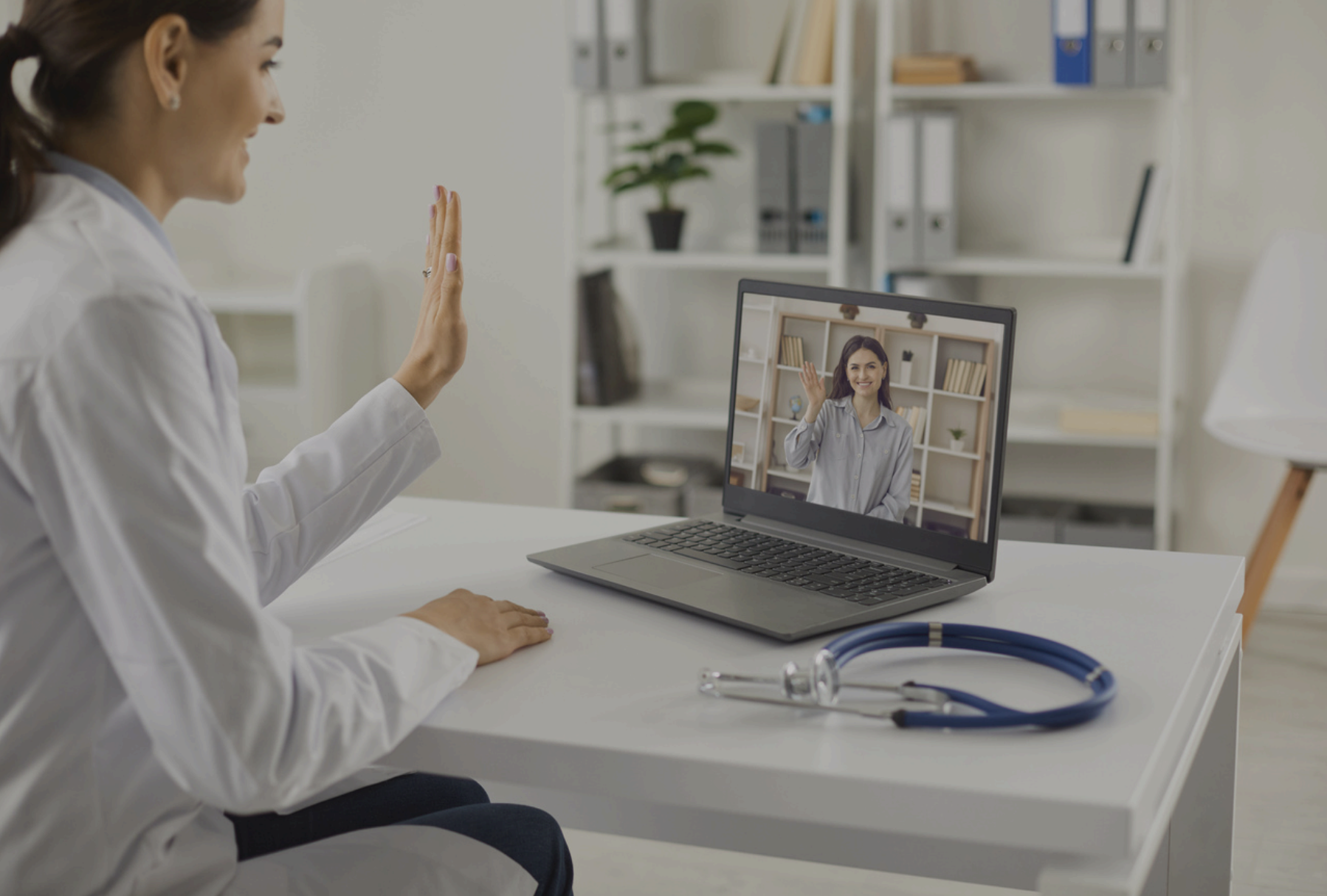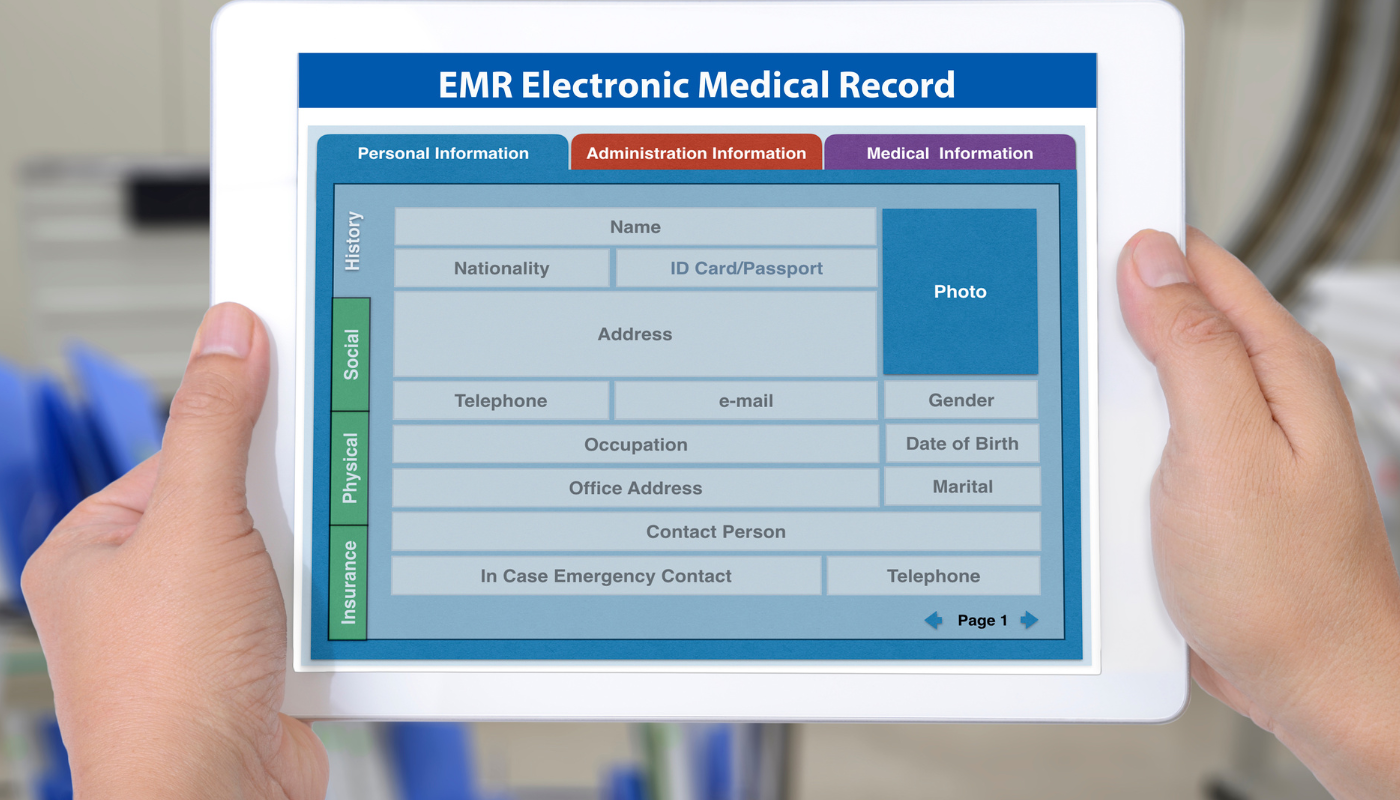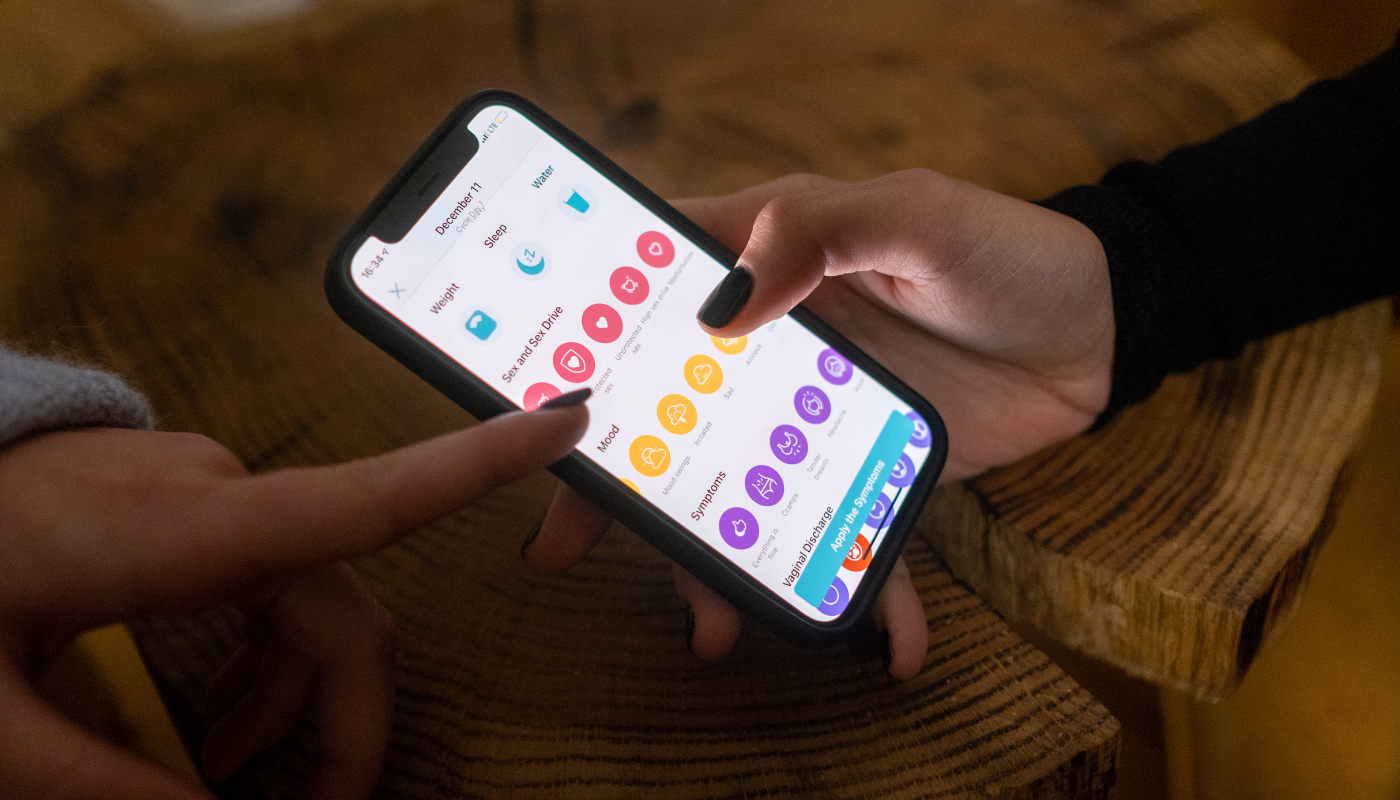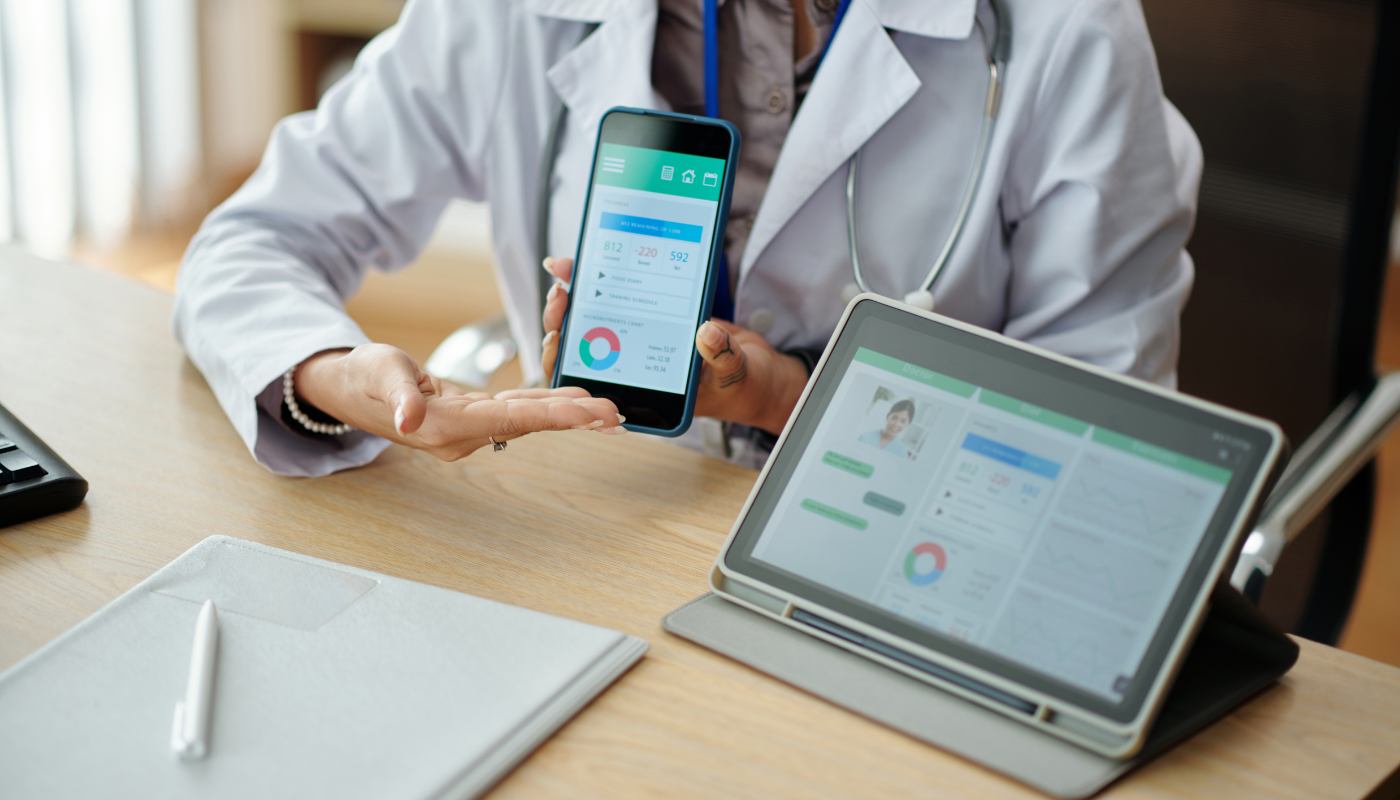
As our reliance on digital solutions continues to grow, so do expectations for apps to not only function reliably, but also deliver fast, accessible, and user-friendly experiences. Nowhere is this more important than in healthcare, where digital tools support everything from appointment scheduling to health monitoring and care coordination. In this context, it's critical that users can easily navigate, understand, and engage with the apps that support their well-being. That’s where UX design becomes essential.
UX design is all about deeply understanding the needs, goals, and challenges of the people an app is built to serve - and crafting solutions that meet those needs effectively. It involves uncovering user motivations, frustrations, and pain points in order to create experiences that are not just functional, but also intuitive, engaging, and impactful.
Despite the importance of good UX, many healthcare apps still fall short in delivering truly user-friendly experiences. That’s often because designing for healthcare comes with a unique set of UX challenges: accommodating diverse patient needs, organizing large volumes of complex information, and supporting high-stakes interactions that directly impact patient outcomes. When these challenges aren’t thoughtfully addressed, the results can be poor engagement, reduced trust, and compromised care.
This guide explores the critical role of UX in healthcare app development and provides a roadmap for creating user-centered digital solutions that prioritize patient satisfaction and health outcomes. By addressing common pitfalls and outlining essential considerations, we aim to help healthcare organizations harness the power of UX design to elevate digital care.

UX design plays a pivotal role in helping users navigate an app effortlessly and achieve their goals quickly. In the healthcare space, where ease of use can have a direct impact on patient outcomes, this is especially critical.
Studies have shown that healthcare apps with intuitive, seamless design can encourage regular doctor visits, improve adherence to treatment plans, support timely interventions, enhance data collection, and enable more informed decision-making.
User-friendly apps also empower patients to manage their health more effectively—by logging symptoms, tracking progress, and accessing relevant educational resources. This proactive engagement fosters early detection of health issues, more accurate self-reporting, and stronger communication with healthcare providers, ultimately supporting a more collaborative and informed healthcare journey.
Good UX should feel almost invisible. A well-designed app allows users to complete tasks easily, without friction or confusion. When the experience is smooth and intuitive, users remain focused on their goals—not the interface.
On the flip side, poor UX can turn even the most well-intentioned healthcare app into a source of stress. Cluttered layouts, confusing navigation, and overwhelming information can prevent users from finding what they need, reducing the app’s overall effectiveness.
Intuitive and Easy to Use
Any healthcare app should be designed to be easily navigable for users of all ages and abilities. Core functions - such as appointment scheduling, medication reminders, and access to health records - must be clearly presented and intuitive to use, without requiring guesswork.
Tailored to Individual Needs
Personalization is critical in healthcare. An app should adapt to each user's health profile by offering relevant content, features, and recommendations that align with their unique needs and conditions.
Clear and Accessible
Health data, conditions, and treatment plans should be presented in a way that’s easy to understand. Use simple, concise formats, while also offering optional deep dives for those who want to explore more detailed information.
Engaging and Supportive
Some users may struggle with digital tools., so including interactive tutorials, tooltips, and access to user support to help guide them can be especially helpful. These features boost engagement and empower users to navigate the app with confidence.

Complex Navigation and Information Overload
One of the most prevalent issues with healthcare apps, poor UX may include convoluted menus, unintuitive pathways, and overwhelming amounts of information, which can frustrate users and lead to high abandonment rates.
Users struggling to find essential features like appointment scheduling or medical records due to cluttered interfaces and unclear navigation cues have a high probability of abandoning an app altogether. These challenges not only hinder user experience but also undermine the app's effectiveness in supporting patient care.
Lack of Personalization
Personalization is crucial in healthcare settings where patient needs vary widely. Apps that offer generic experiences without catering to individual preferences or medical conditions fail to engage users effectively. Tailoring the app experience to accommodate specific user needs—whether through customizable settings, personalized health recommendations, or targeted notifications—can significantly enhance user satisfaction and adherence to healthcare regimens.
Poor Accessibility
Failing to adhere to accessibility standards poses significant barriers to users with disabilities, potentially excluding them from accessing essential healthcare services. This oversight can prevent individuals with visual impairments or motor disabilities from effectively navigating the app and accessing critical health information. Ensuring compliance with accessibility guidelines is not only a legal requirement but also a moral imperative to promote inclusivity and equitable access to healthcare technologies.Want to learn more about Accessibility? Our free ADA Accessibility Checklist and Guide covers everything you need to know!

When building a healthcare app, understanding the critical elements that can make or break its success is essential. The following are the key considerations that ensure your app not only meets regulatory requirements but also delivers a seamless and secure user experience.
All patient data transmitted and stored within the app must be encrypted to prevent unauthorized access. This includes implementing strong authentication measures and data encryption protocols that have the ability to safeguard sensitive information.
HIPAA aims to safeguard individuals' medical records and personal health information from unauthorized access, use, or disclosure. Creating a HIPAA compliant application requires extensive development work including:
Access Control and Audit Trails:
Implementing access controls to restrict data access based on user roles and responsibilities is crucial. Audit trails should be maintained to track and monitor user activity within the app, ensuring accountability and compliance with HIPAA regulations.
Patient Consent Management
Creating mechanisms within the app that allows patients to grant or revoke consent for the use and sharing of their health information is crucial for any healthcare app. It’s additionally important to include clear explanations of how patient data will be used and shared, as well as the ability to update preferences over time.
Clear Consent Management
Providing easy-to-understand explanations of privacy policies and consent options.
Simplified Data Entry
Minimizing the burden of data entry for healthcare providers to ensure efficiency without compromising data accuracy.
Secure Messaging
Implementing secure messaging features that allow encrypted communication between patients and providers, ensuring privacy and compliance with HIPAA regulations.

Electronic Medical Records (EMR) refer to digital versions of patients' medical histories, treatment plans, diagnoses, medications, and test results that healthcare providers use to record and manage patient health information. These records streamline healthcare delivery by enabling healthcare professionals to access and update patient records securely and efficiently. Because they are available across health care settings, EMRs facilitate seamless communication and care coordination among providers.
Creating an app that includes seamless integration with EMRs allows healthcare providers to access and update patient records directly from the app, enhancing continuity of care by providing real-time access to up-to-date patient information during consultations and treatment planning.
Seamless Access to Patient Records
Healthcare providers should have the ability to quickly retrieve and update patient medical records during consultations without disruptions.
Intuitive User Interfaces
The interface should easy to navigate and include clear menus with quick access to relevant patient information.
Fast Data Retrieval
To minimize waiting times it’s crucial to optimize data retrieval speeds to when accessing patient records
Customizable Views
Healthcare providers should have the ability to customize how patient data is displayed, allowing them to focus on pertinenti nformation during consultations.
Real-Time Updates
Real-time synchronization of patient records between the app andEMR systems should be included to ensure providers have access tothe most current data.
Security Measures
Robust security measures, including encryption and access controls,should be implemented to protect patient information in compliancewith HIPAA regulations.
Integration with Clinical Decision Support Tools
Integrating with decision support systems that provide alerts,reminders, and clinical guidelines based on patient data helps tosupport informed decision-making.
Mobile Compatibility
It’s important to ensure compatibility across mobile devices, as thiswill allow healthcare providers to access EMR data securely fromanywhere, improving flexibility and accessibility
Audit Trails
Audit trails that track user actions within the app should beimplemented to ensure accountability and compliance withregulatory requirements.
Training and Support
Comprehensive training and ongoing support should be provided tohealthcare staff in order to to maximize the app's usability andeffectiveness in clinical practice.

Easy Scheduling and Attendance: Users should be able to schedule appointments effortlessly and join virtual sessions without technical barriers. This feature enhances convenience and encourages regular use of the app for healthcare needs.
Ensuring seamless virtual consultations is crucial for meeting the evolving needs of users who increasingly seek convenient healthcare solutions. Virtual consultations offer users the flexibility to access healthcare services from the comfort of their homes or on the go, reducing the need for physical appointments and minimizing waiting times.
Easy Scheduling and Attendence
Users should be able to schedule appointments effortlessly and join virtual sessions without technical barriers. This feature enhances convenience and encourages regular use of the app for healthcare needs.
Clear Video and Audio Quality
High-quality video and audio are crucial for effective communicationduring virtual consultations. Clear visuals and sound ensure thatdoctors can accurately assess patients' conditions and providerecommendations without ambiguity
Secure Data Transmission
Robust security measures are essential to protect sensitive medicalinformation during virtual consultations. Users need assurance thattheir personal health data is safeguarded against unauthorizedaccess or breaches.
Integration with Health Records
Seamless access to medical histories and records allows healthcareproviders to review past treatments, medications, and test results.This integration supports informed decision-making and personalizedcare planning.
Interactive Features
Features such as chat messaging, file sharing (like X-rays or labresults), and real-time annotation enhance the interactivity of virtualconsultations. These tools facilitate comprehensive discussions andcollaborative treatment planning between doctors and patients.

Creating user-friendly scheduling and appointment management features in healthcare apps is crucial for enhancing patient experience, improving healthcare provider efficiency, and ultimately, optimizing overall healthcare delivery.
Healthcare scheduling functionalities should streamline the process of booking appointments and result in the reduction of administrative burdens for both patients and healthcare staff. By implementing intuitive interfaces, such as calendars with easy navigation and clear appointment slots, users can quickly find available times that suit their schedules without confusion or frustration.
Seamless appointment management features not only benefit patients but also support healthcare providers in managing their workload effectively. Automated reminders and notifications help reduce no-show rates, ensuring that patients attend their appointments punctually and receive timely care. Integration with electronic health records (EHR) allows healthcare providers to access patient information seamlessly during appointments, enhancing continuity of care and enabling informed decision-making.
The importance of UX-friendly scheduling extends beyond convenience; it directly impacts patient satisfaction and healthcare outcomes. A well-designed scheduling system fosters trust and reliability, encouraging patients to engage proactively with their healthcare needs. By reducing wait times and simplifying the booking process, healthcare apps can enhance accessibility to care, particularly for patients with busy schedules or mobility limitations.

It's essential to prioritize user-friendly systems that enable seamless access to vital health documents, including medical records, lab results, and prescriptions.
To ensure patient health information is accessible, it’s important to provide a user-friendly document management system that allows patients to easily find and share their medical information. This can be achieved through easy-to-navigate interfaces, drag-and-drop functionality, cloud storage integration, and secure sharing options.
In addition, robust search features are a great way to help patients quickly and easily find the information they need. This can be achieved by proving paramount for enabling users to find relevant data without much effort. This can be achieved by providing keyword search functionalities, auto-suggestions and advanced search filters.

Personalization is critical in empowering users to manage their health effectively through medical apps, offering tailored support and guidance based on individual health profiles. Customizing health updates, medication reminders, and screening recommendations ensures that users receive relevant information aligned with their specific health needs and treatment plans. This personalized approach enhances user engagement and adherence to medical advice, promoting better health outcomes over time.
Customized Notifications and Reminders
To help users stay informed and proactive in managing their healthconditions, provide customizable notifications and reminders. Thesemight include personalized alerts for medication schedules, healthcheck-ups, and other important health updates.
Tailored Health Resources
Empower patients to make informed decisions about their health andwellness with access to educational materials, health monitoring tools,and support resources that cater to each user's unique health concernsand preferences.
Enhanced User Engagement
By delivering personalized content and features, medical apps canincrease user engagement and satisfaction, leading to improved userretention and health outcomes.

Ensuring healthcare apps cater to elderly users is pivotal for promoting inclusivity and equitable access to digital health resources. Elderly individuals often encounter challenges like reduced vision and dexterity, along with varying levels of familiarity with technology, so incorporating design principles that prioritize accessibility is essential.
This involves creating interfaces that are not only visually clear and simple but also incorporate larger fonts and high-contrast colors to aid readability. Intuitive navigation is crucial, ensuring older users can easily find and use features without frustration. Features like customizable accessibility settings and compatibility with assistive technologies such as screen readers are vital to enhancing usability.
Moreover, conducting thorough user testing with elderly participants is essential when designing a healthcare app. This process helps uncover usability barriers early in development, gathers insights into pain points, and validates design choices to ensure they effectively support elderly users' interaction with the app.

Patient portals are crucial for empowering patients through convenient access to their health information, fostering active engagement in their healthcare journey. These portals typically include features such as secure access to medical records, lab results, appointment scheduling, prescription refills, and communication with healthcare providers.
Comprehensive Access to Health Information
Providing seamless access to medical records, test results, andtreatment plans allows patients to stay informed about their healthstatus and treatment progress. This transparency encourages patientsto take a proactive role in managing their health.
Secure Communication Channels
Facilitating secure messaging capabilities between patients and healthcare providers enables convenient communication for discussing health concerns, asking questions, or requesting appointments. Ensuring confidentiality and data security is paramount to building patient trust in the portal.
Personalization and Customization
Tailoring the portal experience to individual patient preferencesenhances usability and satisfaction. This can include personalizedhealth alerts, reminders for upcoming appointments, medicationadherence support, and health education resources tailored to specificmedical conditions.
Mobile Accessibility
Optimizing the portal for mobile devices ensures accessibility anytime,anywhere, which is particularly beneficial for elderly patients or thosewith mobility constraints. A responsive design that adapts to differentscreen sizes and devices enhances usability and convenience.

Providing healthcare providers with data visualization and insights offers them clear, actionable information that can drive informed decision-making and improve patient outcomes. Effective data visualization has the ability to transform complex medical data into understandable charts, graphs, and dashboards, allowing providers to quickly identify trends, patterns, and outliers in patient health metrics. This visual representation not only enhances the efficiency of data interpretation but also supports clinical decision-making processes.
Clarity and Simplicity
Designing visualizations that are clear, concise, and easy to interpretensures that healthcare providers can quickly grasp key insights withoutbeing overwhelmed by unnecessary details. This involves usingappropriate colors, labels, and data grouping to enhancecomprehension.
Interactivity and Drill-Down Capability
Incorporating interactive elements such as tooltips, filters, and drilldown functionalities enables providers to explore data at different levelsof detail. This interactivity allows for deeper analysis and betterunderstanding of patient health trends over time.
Integration with EHR and Clinical Workflows
Aligning data visualization tools with existing electronic health records(EHR) and clinical workflows ensures seamless integration intohealthcare providers' daily routines. This integration supports efficientaccess to patient data during consultations, enabling providers to maketimely, evidence-based decisions.
Real-Time Updates and Alerts
Providing real-time updates and alerts through visualizations helpshealthcare providers monitor patient conditions and interventionsproactively. Alerts for critical changes in patient metrics or deviationsfrom treatment plans enable timely interventions, contributing toimproved patient care and outcomes.
Workflow Alignment with Value-Based Care
Aligning data visualization tools with value-based care principlesinvolves focusing on outcomes that matter most to patients andhealthcare quality. Visualizations should facilitate tracking of keyperformance indicators (KPIs) related to patient outcomes, costefficiency, and patient satisfaction. This alignment ensures thathealthcare providers can deliver high-quality care that is both effectiveand efficient.

In our current digital age, healthcare apps play a pivotal role in enhancing patient care, improving accessibility, and empowering users to take control of their health. By prioritizing user experience (UX) design principles healthcare companies can create apps that not only meet regulatory standards but also foster trust, engagement, and satisfaction among users.
As technology continues to evolve, the focus on UX in healthcare apps will remain essential in delivering effective, user-centric solutions that support better health outcomes and drive innovation in the healthcare industry.

 The Ultimate Guide to QA Testing
The Ultimate Guide to QA TestingWant to launch a flawless app in 2025? Our Ultimate Guide to QA testing explains everything you need to know - the processes, tools, and best practices that will help you deliver bug-free, user-friendly products that users love!

 Product Roadmapping: The Complete Guide
Product Roadmapping: The Complete GuideReady to bring your next digital product to life? Don't miss our free guide to product roadmapping! In it you'll discover the 7 essential steps to building a product roadmap that will put your project on the path to success.

 How To User Test: UX Design for Successful App Development
How To User Test: UX Design for Successful App DevelopmentUser testing is one of the most powerful tools in the app development process, as it provides you with invaluable insights into what’s working, what’s confusing, and what’s missing - ensuring your app provides users with a seamless experience. In this guide, we'll walk you through our user testing process, step by step!